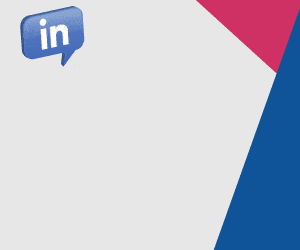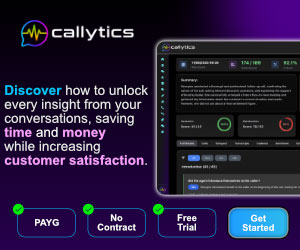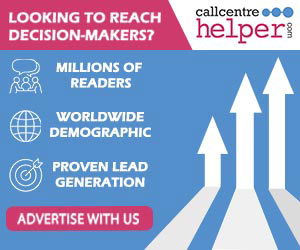Live chat has become a cornerstone of customer support, offering instant responses and real-time solutions. But for agents, managing multiple chat conversations simultaneously can feel like juggling flaming torches.
Balancing efficiency with personalized care is no easy feat, yet it’s the key to delivering satisfying customer experiences.
How can agents stay organized, avoid burnout, and ensure no customer feels like just another ticket in the queue?
So when a member of our Community asked:
“Does anyone have any tips for agents to handle multiple chat conversations effectively, but also ensuring satisfying customer experiences?”
We put together the responses from the industry professionals to share with you.
Effective Strategies for Managing Multiple Chat Conversations
Handling multiple chat conversations effectively requires a mix of thoughtful planning, the right tools, and ongoing support for agents.
Here are some practical strategies to help achieve this balance:
1. Understand What Affects Chat Concurrency
To manage multiple chats effectively, it’s important to understand what affects concurrency. Factors like the type of customer query and how complex it is can determine how many conversations an agent can handle.
It’s also essential to remember that managing chats isn’t just about handling large volumes but ensuring quality service.
There Is No One-Size-Fits-All
It really depends on the industry and type of questions. I don’t believe there is a one-size-fits-all when providing great digital customer service through chat.
There are many ways you can provide personalized responses that leave customers feeling they have had their questions answered and equally keep company efficiency satisfied.
Personally, if I’m considering multiple chats for a client, it would never be more than three at a time.
Concurrency is a difficult conversion to forecast for chats. Perhaps it’s time to consider a different metric for live chat.
Contributed by: Karen
Concurrency Depends on Query Type and Complexity
The type and complexity of queries received in webchats heavily influence how many conversations an agent can handle at once.
While managing multiple chats improves efficiency, it requires careful balancing. As concurrency increases, average handling time (AHT) tends to rise, which can negatively impact customer satisfaction.
Analysing a comprehensive set of data can help identify patterns and dependencies between concurrency, interactive chat duration, total chat length, and any increases in AHT.
Ultimately, customer experience should remain the top priority when making decisions based on these insights.
Contributed by: Matt
Adjust Chat Limits Based on Complexity
Interestingly, apology rates and chat cadence are two of the most impactful things in this space, based on analysis of >100k of them.
Most businesses think their agents are apologizing every time they need to… the unfortunate truth is they end up getting distracted by treating the customer as a ‘problem to be solved’, rather than being free to use a framework to get to the outcome and empowering the agent to be more free to ‘be human’.
Chat complexity, too, is important. We’ve seen that as complexity goes up, so too does chat time, frustration for the customer, and likelihood to escalate goes through the roof. We’ve seen chats where customers have spoken about upwards of 5 issues on a single chat!
If it’s too complex, or there’s any sign of complaint, voice is a far better way of dealing with the situation on first call and maintaining costs/times.
Contributed by: Paul
Don’t Just Focus on Concurrency
In my opinion, solely focusing on concurrency can have a negative impact on customer outcomes.
My suggestion would be to combine all efficiency measures into Chats Per Hour (CPH – No. Chats/ Staffed hours).
Targeted correctly, this then places sufficient accountability to the chat rep to use their time as they require, so where needed, they can spend more time with a certain customer (rather than focus on AHT), or reduce concurrency if dealing with a more complex chat.
This should then achieve the balance between efficiencies and customer experience.
Contributed by: Martyn
2. Set Optimal Chat Limits
Clear limits on how many chats an agent should manage at once help balance efficiency and the quality of service. Overloading agents can lead to mistakes and longer response times.
Set Two Chats as a Guideline for Most Agents
Aim for two concurrent chats, but allow the agent to pull down a third chat and bonus the agent with the highest concurrent chat rate and CSAT score.
Contributed by: Andrew
Avoid Overloading Agents with Too Many Concurrent Chats
It’s important not to overload agents with too many concurrent chats.
First, this increases the risk of mixing up customers’ queries, and second, it causes long waiting times for customers as the agent deals with other conversations.
Waiting 5–10 minutes is acceptable if the response resolves the issue; however, if the query remains unresolved, waiting can be frustrating for the customer.
Also, ensure your system allows chat transcripts to be sent to customers afterward. I’ve encountered situations where this wasn’t possible, and if that’s the case, it’s time to reconsider your tool—sending transcripts is a basic function.
Contributed by: Ian
Monitor Maximum Concurrency and Average Concurrency
Effectively managing multiple conversations (chat concurrency) is the secret to really being able to maximize productivity and performance on a chat program. While there is some good information out there, most of it is buried in a sea of misinformation, some of it wildly wrong.
I could write a book on this, so keeping it short is tough.
- First – there are two main KPIs: Max Concurrency – think of this as top speed possible – and Average Concurrency – rear-looking view at what the typical concurrency was over the period.
- Max – Determined through testing – this is a very program-specific measure, and is influenced by contact complexity, other systems agents use, etc.
- Average – This is more of a measure of how efficient you are in leveraging your workforce to maximize that productivity.
Taking your most tenured chat agents, increase concurrency until you see handle time start to increase significantly or quality drop.
For new agents, understand how quickly they can progress from zero concurrency to max.
Optimizing chat concurrency requires both dedicated and skilled chat agents (not supporting multiple channels), but also sufficient chat volume to keep those resources performing optimally.
Contributed by: James
Stagger Chats to Avoid Simultaneous Starts
Skills / proficiency on chat topics needs to be factored in, along with how proficiency impacts the AHT for that person.
This tied in with concurrency is also key – handling a max number of chats at the same time obviously has its advantages, but at what point does the second or third chat get delivered to an agent?
My experience is you want a delay from the start of the first chat before the second starts – this stops overload of the agent taking X number at once and in turn provides first contact quality and experience for the customer.
Contributed by: Dean
3. Enhance Efficiency During Chats
Using the right tools and techniques can make handling multiple conversations easier. This helps agents stay organised and respond promptly without feeling overwhelmed.
Use Downtime Between Responses Wisely
Managing multiple live chats is always a challenge. The idea is that the lag time between customer responses offers an opportunity to increase efficiency, allowing agents to handle multiple chats at once.
However, there’s a risk that more than one customer might respond simultaneously, and the agent’s delayed reply could negatively affect the customer experience. In many cases, customers seem to expect some delay, so the impact may not be significant.
Ultimately, the key question is: what kind of experience do you want to create for your customers?
In my opinion, I wouldn’t recommend handling more than two chats at once. If possible, consider using one chat with email responses during the customer’s lag time.
Of course, I’m not an expert – you are the one best positioned to understand what works for your customers.
Contributed by: Marc
Implement Quick Access to Prewritten Responses
To maintain quality, consider using prewritten response keys while ensuring they reflect your business’s tone of voice. This provides a solid foundation and allows agents more time to personalise responses and add relevant details when needed.
I agree with the other suggestions: a maximum of three concurrent chats is ideal, but this should depend on the nature of the conversations. For example, if the support is more complex, setting a limit of two might be more appropriate.
Contributed by: Lydia
Create and Maintain a User-Friendly Knowledge Base
A well-organised knowledge base that’s easily accessible to agents is crucial for ensuring consistent, accurate, and grammatically correct responses.
It also helps agents respond quickly, reducing the pressure that can lead to mistakes and delays. The more detailed and effective the knowledge base, the greater the support it provides to agents.
Contributed by: Paulo
Combine Conversation Flow Mapping Software With an Integrated Knowledge Base
I recommend combining conversation flow mapping software with an integrated knowledge base. This setup can cover around 80% of standard queries, providing fast and consistent responses.
For the remaining non-standard queries, agents can respond manually, and these can be added to the conversation flows by your CX team, further enhancing consistency and response speed in the future.
Contributed by: Jimmy
4. Support and Empower Agents
Agents perform best when they have proper training, the right tools, and a simple workflow. Supporting agents ensures they can focus on providing good service and resolving customer issues.
Hire Staff with the Right Skills for Chat
It’s essential to hire agents who are well-suited for chat, with strong grammar, focus, and language skills. A great phone agent doesn’t always translate to an effective chat agent.
Concurrency is another factor to consider. As a WFM leader, it might be tempting to overload agents to increase capacity, but agents can typically manage only two to three chats at once without compromising the customer experience.
The more concurrent chats an agent handles, the more likely it is that handling time, adherence, and customer experience will suffer, leading to the need for more agents, increased costs, and a negative impact on business performance.
Contributed by: Michael
Streamline Agent Tools and Processes
As mentioned, there is no one-size-fits-all solution, but simplifying the agent experience can significantly improve the customer experience.
I’m a strong advocate for a unified user experience (UUE). There are various ways to implement UUE for agents, and the contact centre should consult with experts or trusted technology partners to find the best practices for their environment.
Contributed by: Pushkar
Provide Regular Training to Build Confidence
Juggling multiple chats requires practice. The best chat agents are highly skilled in their subject areas and proficient in using both knowledge management systems and chat platforms.
For those focused on the bottom line, the main benefits of chat—efficiency, bots, and concurrency—are key. Continuous training is crucial to optimise concurrency and ensure customer satisfaction.
Contributed by: Paddy
Encourage Agents to Focus on Resolving Queries
It’s important for agents to stay focused, think quickly, and address the customer’s issue directly, without unnecessary detours.
The number of concurrent chats should also be kept in check—no more than two at a time. This helps maintain both customer satisfaction and efficient handling time.
Train agents to focus on providing resolutions and closure to prevent repeat contacts and improve overall effectiveness.
Contributed by: Karan
This article was made possible due to the great community of experts we have at Call Centre Helper, to get involved just join our LinkedIn Community and and if you aren’t already make sure you are following us on LinkedIn to see our latest content.
If you are looking for more information on on Live Chat, read these articles next:
- How to Forecast and Plan for Live Chat
- Multichannel Contact Centre Calculator Tool – Phone Email Chat
- What Are the Contact Centre Service Level Standards?
Author: Megan Jones
Reviewed by: Robyn Coppell
Published On: 25th Nov 2022 - Last modified: 1st Oct 2025
Read more about - Call Centre Questions, Call Centre Answers, Live Chat





































